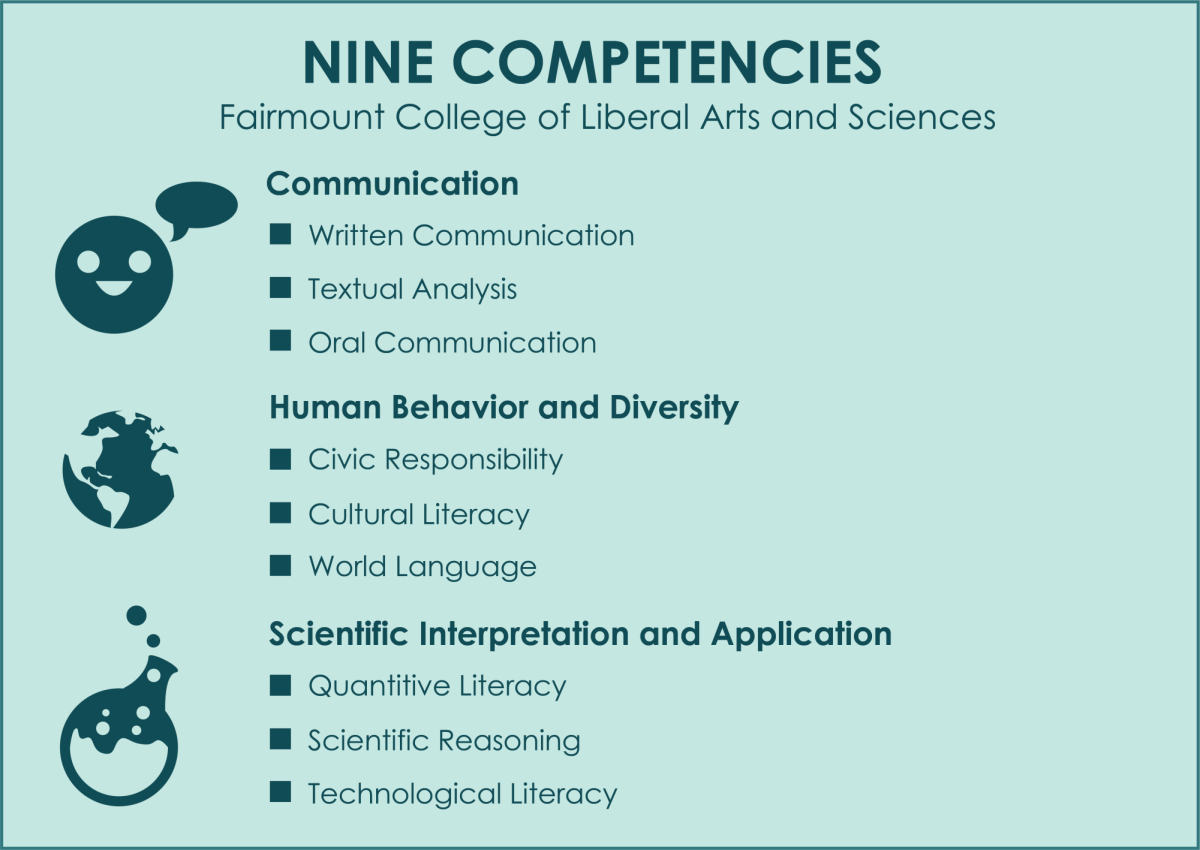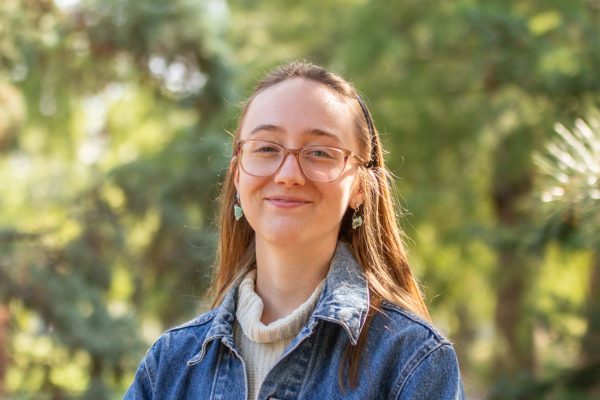The biggest college of study at Wichita State is set to reduce the required general education coursework for its students.
Starting in fall 2024, the Fairmount College of Liberal Arts and Sciences (LAS) will change its college’s general education requirements, which will only have students complete courses that fall into nine “competencies.”
Andrew Hippisley, the LAS dean, said the college hopes that changing LAS general education requirements will clarify to students what skills they’re learning; the advisers and faculty will be trained to explain these skills to students.
“The real change in requirements is to make it explicit that while you’re doing this course … you are learning how to think critically or you’re learning how to argue or to communicate,” Hippisley said.
All incoming LAS students will be required to complete the nine competencies. Transfer students may come in with courses that satisfy competencies if determined as equivalents.
Current LAS students will have the option to switch to the new LAS graduation requirements, and Hippisley said advisers will discuss with students the potential benefits of doing so. He said LAS plans to do outreach in the spring.
Currently, LAS general education requirements consist of 12 hours of foundation courses and at least 45 credit hours in upper division courses.
Under the new requirements, the nine competencies are divided into three categories: communication, human behavior and diversity, and scientific interpretation and analysis. Each competency, except for the foreign language requirement, can be fulfilled by one three-credit hour course, according to Patricia Phillips, the director of the LAS Advising Center.
“So it’s a reduction for the students, and hopefully, it’s more meaningful instead of ‘Here, choose 24 hours from this basket and 24 from that basket,’” Phillips said. “We want (students) to know what they’re getting out of those courses. That way, they can put it on their resume and be better applicants for jobs.”
In addition to helping students become more marketable, Hippisley said that the nine competencies will also allow for greater flexibility in selecting courses. For example, LAS students are currently required to take American politics or one of two United States history courses, but to meet the civic responsibility competency, they can choose from various electives.
“We don’t want it to be there’s only one course or there’s only two courses (to meet a competency); we want there to be 15 or 18 courses,” Hippisley said.
Hippisley said that some competency courses may also meet general education or major requirements as well. In addition, certain courses may fulfill two competencies at once, giving students the option to complete the competencies with reduced courses.
Phillips gave an example of how a foreign language class could meet two competencies.
“To me, it makes a lot of sense that our students could do both the world language and the cultural literacy (competencies),” Phillips said. “Because to me, if you’re not learning about the culture of the language that you’re learning to speak, you’re missing a big chunk of it.”
Phillips said for courses to satisfy two competencies, faculty must ensure their learning objectives meet both sets of competencies and receive approval.
According to Hippisley, the faculty in all LAS departments have copies of the competencies and are currently submitting their courses’ syllabi, specificizing which competency their course meets. After, a committee will approve it or specify any adjustments needed.
When students pick their classes for the fall of 2024, Hippisley said the competencies will be programmed into the online course schedule, with a drop-down menu to show which classes fit each competency.
Hippisley said the faculty in LAS voted and approved the new general education requirements.
“I think there was consensus that our current requirements are confusing,” Phillips said. “And again, a lot of people had the opinion that it seemed more like a checklist.”
For two years, Hippisley, Phillips and a committee with members of different disciplines worked on the new LAS gen ed requirements, reading articles and considering other schools’ processes. Hippisley said the competencies drew inspiration from the American Association of Colleges and Universities, an organization that WSU is involved with.
Hippisley said they also worked to ensure faculty understood the new changes and “bought into it.”
“To be honest, when you make a change like this, it takes a lot of time to get it right and to get people to understand what you’re doing and to listen to their objections and take them on board,” Hippisley said. “A number of times, we have thought we were there, and someone from outside the committee would raise a point, and we had to adjust because they were right.”
One of the “big changes” Hippisley noted is the technological literacy competency, which falls under the scientific interpretation and application competency. He said that regardless of students’ degrees, LAS wants students to understand how technology works and how to solve problems.
“You can take that with you, have it on your CV (curriculum vitae), and it makes you more marketable,” Hippisley said.
Phillips said she wants students to enjoy taking courses outside of their major requirements and for LAS graduates to realize they gain skills beyond just “a piece of paper.”
“I’m very excited about this because, well, I want students to be excited about their education, not just their subject,” Phillips said. “To me, these fill in the gaps. (With) these, you can walk out of WSU with a liberal arts and science degree and say, ‘Wow, I got a really good education. I’m prepared for the future.’”





